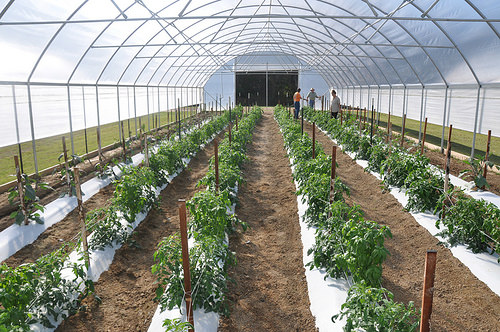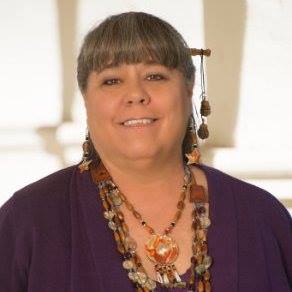Native American Tribes Are Rebuilding Their Local Economies for a Better Quality of Life.
Debra Krol is an award-winning journalist with an emphasis on Native issues sharing this guest article about local economic power in Native American tribes today.
On a sultry summer morning in late June, more than 500 people gathered to celebrate with the Fort McDowell Yavapai Nation as the 900-member tribe, located about 30 miles east of Phoenix, broke ground for its new casino. The 166,341-square-foot facility will feature all the latest gaming amenities, but it will also be integrated into the tribe’s AAA Four Diamond We-Ko-Pa Resort and Conference Center and other destination enterprises. The tribe has also diversified its businesses beyond gaming to include a farm; a Western adventures facility; the legendary Boulder House, now a wedding and private party venue; an RV park; a gas station; the Poco Diablo resort in Sedona, Arizona; and a sand and gravel operation.
A display of oil and vinegar produced by the Séka Hills Olive Mill & Tasting Room, run by the Yaha Dehe Wintun Nation in California (Source: Séka Hills Facebook page)
Fort McDowell’s strategy is echoed throughout the United States as tribes build not only casinos but entertainment venues, golf courses, factories, clean energy generating plants and even wineries. It’s all part of what Native American economic development expert Eric S. Trevan calls “building quality of life” in tribal communities.
“Tribes have always engaged in economic activity,” Trevan says. In pre-European contact days, “there was no one single medium of exchange,” he says, “but business was done through respect, negotiation and exchanging other business services.” Tribes bartered for goods and services such as fish, corn, textiles, shells and knowledge.
In fact, many tribal entrepreneurs were so successful that most of them only had to work four or five months to sustain themselves the rest of the year. This enabled Native people to engage in cultural pursuits and art, writes Robert J. Miller, a nationally-recognized expert in Native economic development, in the book Reservation ‘Capitalism:’ Economic Development in Indian Country. Miller, a member of the Eastern Shawnee Tribe of Oklahoma and a professor at the Sandra Day O’Connor College of Law at Arizona State University, adds, “Those who produced surpluses (profits) were even honored for hosting potlatches, giveaways and ceremonies, and for their generosity.”
As European colonists and their American descendants moved across the continent, Indigenous peoples’ business ties and economies dissolved in the wake of war, forced relocation to reservations that were most often sited far away from business centers or available services, and other social disruptions.
But times are changing in tribal communities. As tribes rebuild their governments, they are also rebuilding their economies. “Expanding and creating new forms of economic development and activities in Indian Country is probably the most important political, social, community and financial concern that Indian nations […] face today,” Miller writes.
“It’s important to note that building economies is really more about enhancing quality of life,” says Trevan, a member of the Match-E-Be-Nash-She-Wish Band of Pottawatomi Indians and a faculty member at Evergreen State College in Washington. “Every tribal government wants what’s best for its citizens to have a high quality of life.” He adds that simply seeking a revenue stream is short-sighted: “Leaders should look to all systems of a functioning economy—investment, government, consumption and exports—when planning how best to move forward.”
Tribes across the U.S. are engaged in a variety of projects and programs aimed at building and sustaining local economies.
In Nevada, the Moapa Band of Paiutes is using the sun to power their way to prosperity. The 358-member Great Basin Desert tribe is building the second of two large solar generating plants. The first facility sells electricity to the Los Angeles area, and the second plant’s output is earmarked for Las Vegas. When complete, the two plants will produce more than 600MW of clean electric power.
“We’ve been in solar energy for quite a while now,” says Moapa Chairman Greg Anderson. “It means a lot to our people, including jobs.” Between the solar plants, the Moapa Travel Plaza and Casino, an arts and craft shop and other small businesses, Anderson says that anybody in his tribe who wants a job, gets one. “These businesses benefit all people,” says Anderson.
Farming by the Mississippi Band of Choctaw Indians (Source: USDA)
In Central Mississippi, the Mississippi Band of Choctaw Indians is one of the region’s economic powerhouses. The 10,000-member tribe has been doing business with neighboring tribes and European settlers for centuries. Even after ceding much of their land to the United States and seeing most of their tribe forced out of their ancestral homeland, the Mississippi Choctaws endured, and now own several businesses with a combined annual payroll of more than $100 million. The tribe’s diversified portfolio includes metal fabrication, commercial electrical services, farming, custom printing, plastics and hospitality firms.
“Providing permanent, full-time jobs for over 5,000 tribal members and non-Indian employees, the Tribe is a major provider to the state’s economy,” notes Chief Phyliss J. Anderson on the tribe’s website.
The Capay Valley, nestled into rolling hills northwest of Sacramento, California, is home to the Yocha Dehe Wintun Nation. The tiny tribe—there are just 69 tribal members to date—is using casino revenues to purchase thousands of acres of land in its ancestral territory with the goal of diversifying its economy. Yocha Dehe owns and operates Séka Hills Olive Mill & Tasting Room, which deals in gourmet olive oil, wildflower honey, beef jerky, almonds and walnuts. The tribe’s 16,000-acre agricultural area includes 2,100 acres of farmed fields—250 of which are certified organic—1,200 acres of permanent conservation easements and more than 10,000 acres of rangeland. Séka Hills also produces fine wines, including Viognier, a full-bodied white wine, and Tuluk’a, a proprietary red blend. Appellation America says of Tuluk’a, “This will pair well with steak, prime rib, pork ribs or whatever might be on the grill for a home BBQ.”
“One point bears emphasizing and re-emphasizing—improving economic conditions on reservations will greatly help tribal cultures, reservation health and welfare, and the continued existence of Indian nations,” Miller says. “Improved conditions in Indian country will encourage families to move home. Employers can increase salaries and produce both private profits and public tax dollars. Those dollars can be spent on studying and practicing native cultures, creating and supporting language preservation programs, sustaining and improving governmental services, and improving social welfare issues on reservations. And, better economic conditions make families healthier.”
Back at Fort McDowell, Yavapai Nation President Bernadine Burnette offers some of the most compelling reasons for a tribe to build and sustain a local economy: “I grew up in a dirt-floor home with no running water or electricity,” Burnette, 61, says. “Today, we have built hundreds of new homes for our tribal members. We have more jobs than tribal members to fill them. Our elders are cared for and we can send our young people to college. Our nation is strong and will continue to be strong because we have built a strong economic foundation.”
(Top photo source: Debra Krol)
About the Author
Indigenous storyteller Debra Utacia Krol is an award-winning journalist with an emphasis on Native issues, environmental and science issues, and travel who's fond of averring that "My beat is Indians." She is an enrolled member of the Xolon (also known as Jolon) Salinan Tribe from the Central California coastal ranges.
Krol seeks to leverage her extensive journalism experience in Native America and in the mainstream to tell the real story of Indian Country. Krol has written for Indian Country Media Network, High Country News, Winds of Change Magazine (the journal of the American Indian Science and Engineering Society), the Official Arizona Visitors’ Guide and many other publications. She has also contributed articles and photos to two books, "First Families: A Photographic History of California Indians" (Heyday Books, 2007) and "Seaweed, Salmon, and Manzanita Cider: A California Indian Feast" (Heyday Books, 2008).






A city may not be able to change from a sales tax system to a different approach—it might be stuck with what the state allows—but that doesn’t make them helpless to overcome the challenges the sales tax presents.